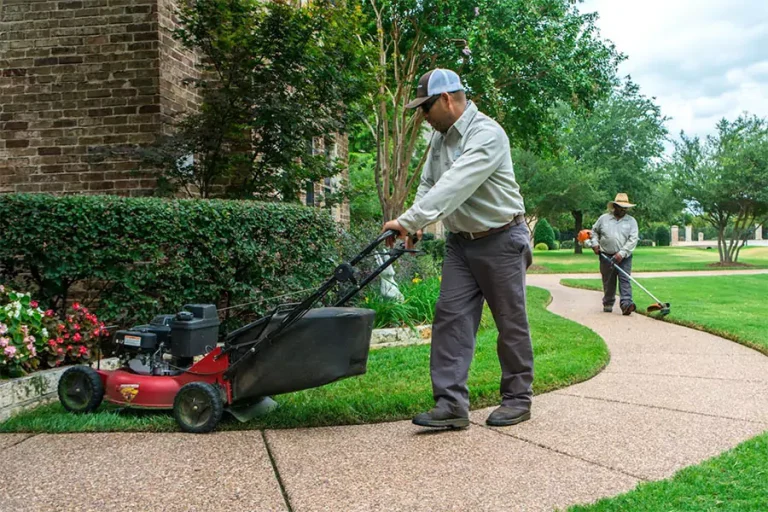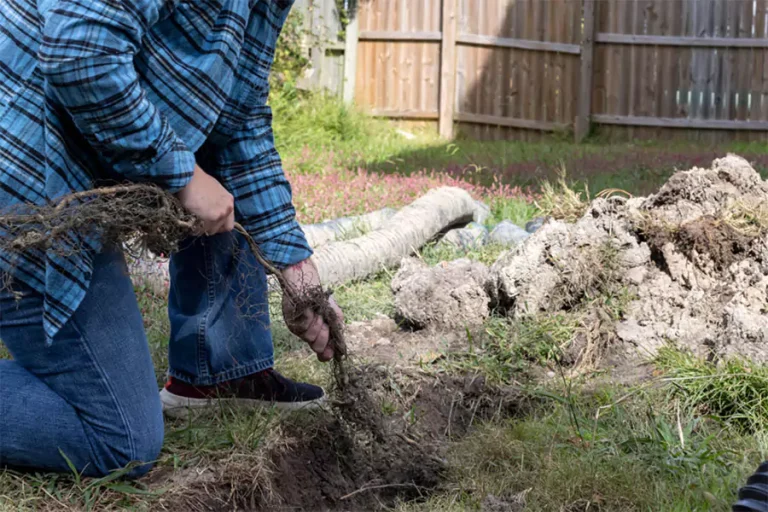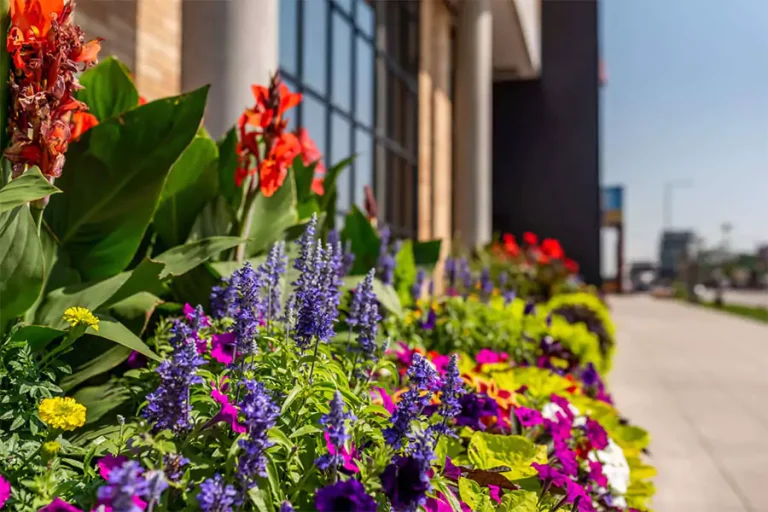Welcome, Houston homeowners! Today, we’re diving into the essentials of DIY landscape drain installation in Houston, TX.
Whether pooling water is turning your yard into a soggy mess, or you’re simply planning to protect your property, understanding the right way to install a drainage system is crucial.
Pearce Scapes, your go-to landscape drainage expert in Houston, is here to guide you through this critical home improvement task.
What You Need to Know Before Installing a Drainage System
Before you get down and dirty with a shovel, take a moment to really get to know your yard. It’s not just about where the grass is greenest look for those sneaky spots where water loves to hang out after a rainstorm.
This isn’t just a puddle party; it’s about spotting the signs for where a French drain or another savvy type of drainage system could turn the tide. Whether you’ve got clay that holds water like a sponge, or sand that lets it zip away too quickly, understanding your soil type is key.
Considering options like trench drains, sub-surface drains, or even a swanky French drain system can make all the difference in keeping your Houston home’s yard from turning into a swampy mess.
Integrating these features into a coherent plan highlights the benefits of professional landscaping design, which ensures not only the beauty but also the functionality of your outdoor spaces. A professional approach to landscaping design will seamlessly incorporate these drainage solutions, enhancing the sustainability and enjoyment of your property
Houston’s flat terrain can be tricky, but with the right landscape drainage solutions be it installing drain lines, catch basin drains, or working with a landscape drainage contractor like Pearce Scapes you can prevent water damage to your foundation and keep your outdoor space as dry as a good Texas BBQ.
So, let’s talk drainage and make sure your property’s as prepared for rain as Houston is for the Astros game ready to play ball with no rain delays!
Tips for Effective Drain Installation
- Choose the Right Type of Drain: From French drains to trench drains, selecting the right type of drain is pivotal. Consider the volume of water and the soil type when making your decision.
- Proper Placement is Key: Place your drains in areas where water naturally collects, and ensure they channel water away from your home and garden structures.
- Ensure Adequate Slope: Drains should have a slight slope to facilitate water flow. A good rule of thumb is a slope of one inch per ten feet of pipe.
Pre-Installation Planning
Assessing Your Yard’s Drainage Needs
Assessing your yard’s drainage needs is a crucial aspect of sustainable landscape design practices for your home.
Begin with a simple observation: take a stroll around your yard following rainfall and look for areas where water tends to accumulate.
These pooling spots are clear indicators of where your current drainage system is inadequate or nonexistent, highlighting a drainage problem.
Sustainable landscape design can improve these areas, ensuring better water management and reducing environmental impact.
Note the nature of the surrounding landscape and soil types, as these will influence the kind of drainage solutions you might consider.
Understanding these patterns of water accumulation will help you determine the best approach to enhance your yard’s drainage, ensuring a healthier and more resilient landscape.
Materials and Tools Needed for Yard Drainage Installation
Installing a drainage system in your yard requires a selection of specific materials designed to manage water flow and prevent damage to your landscape efficiently. Here’s a detailed list of the essential materials you’ll need, each crucial for creating a functional and durable drainage solution:
- Drainage Pipe: This is the main conduit for water to travel away from your property. Choose drain pipe that are durable and the appropriate size for the volume of water you expect to handle for example heavy rain.
- Gravel: Gravel surrounds the drainage pipe, providing a porous layer that allows water to filter through and enter the pipe while supporting the soil structure above.
- Landscape Fabric: This fabric is placed around the gravel and pipes to prevent the infiltration of soil and roots, ensuring the pipes don’t get clogged over time.
- Catch Basin: A catch basin is installed at low points where water collects to gather and redirect water into the drainage system. It’s essential for capturing surface water effectively.
- Perforated Pipes: Ideal for areas needing groundwater absorption, these pipes have small holes that allow water to seep in and be redirected.
- Non-Perforated Pipes: Used in applications where water must be transported without absorption into the surrounding soil, ensuring a directed flow to a designated outlet.
- End Caps: These are used to close the ends of non-perforated pipes, preventing debris entry and water escape from unintended points.
- Pipe Connectors: Necessary for joining sections of pipe together securely, ensuring a continuous and leak-proof drainage path.
- Outlet Pop-ups: These are installed at the end of the drainage line to disperse water above ground at a safe location away from structures.
- Filter Sock: This mesh sock fits over pipes to filter out sediment and prevent the roots from entering the system, protecting the integrity of the pipes.
- Channel Drains: Specifically designed for collecting water across hard surfaces, such as driveways and patios, channel drains prevent water pooling by providing a pre-formed channel covered with a grate.
Types of Drainage Systems
Understanding the different types of drainage systems is essential for selecting the right solution that best meets the specific water management needs of your landscape. Each system has its own characteristics and is suited to different environments and purposes. Here’s a look at the most common types of drainage systems:
French Drains
French drain installations are underground trenches filled with gravel or rock containing a perforated pipe that redirects surface water and groundwater away from an area. French drains are ideal for removing excess water from soggy lawns and preventing water from penetrating foundation walls.
Channel Drains
Also known as trench drains, these consist of a linear channel covered by a grate that is installed flush with the ground surface. They are used to collect water over a flat area like driveways, patios, or poolsides and direct it away from the property.
Catch Basins
A catch basin is a box placed below ground to catch runoff water using a grate on top. It is connected to a drainage system that routes the water away from the area, which is useful in both residential and commercial properties to manage surface runoff.
Sump Pumps
Installed in the lowest part of a basement or crawlspace, sump pumps are used to collect water in a sump basin and pump it out to a place where it won’t cause water damage, which is ideal for homes with frequent basement flooding.
Downspout Drains
These are extensions to a gutter system that carry roof runoff water away from the foundation of the house. They are crucial in preventing water accumulation around the base of a home and mitigating potential foundation issues.
Dry Wells
A dry well is an underground structure that receives water from one or more entry pipes or channels. It allows the water to slowly soak into the ground, which is effective in managing water runoff in areas prone to gathering water.
Subsurface Drains
These are often comprised of flexible plastic tubing installed underground to intercept and divert subsurface water, particularly useful in agricultural settings or large gardens to control water table levels.
Each of these systems offers unique benefits and may be used in combination to achieve the best results in water management and landscape protection. Choosing the right type depends on your specific landscape layout, soil type, and water handling needs.
Why Proper Drainage Solution in Houston TX is Essential
Proper drainage is crucial for maintaining the health and functionality of your property for several reasons:
- Protecting Your Foundation: Water that accumulates around the foundation of your home can cause significant issues, such as cracking, shifting, or even structural failure. Proper drainage systems redirect water away from your foundation, helping to prevent these potentially costly and dangerous problems.
- Enhancing Yard Usability: When excess water is efficiently removed from your yard, the area remains dry and usable, even after heavy Houston rains. This means your outdoor space is always ready for recreation, gardening, or relaxation without being muddy or waterlogged.
- Preventing Soil Erosion: Without proper drainage, water can flow over your landscape unchecked, stripping topsoil and leading to erosion. Installing effective drainage channels water away safely, preserving soil integrity and keeping your landscaping intact.
- Avoiding Plant Disease and Death: Too much water can suffocate plant roots and foster an environment conducive to fungal diseases. Proper drainage helps ensure that water does not pool around plant roots, promoting healthier and more vibrant plant life in your garden.
- Increasing Property Value: A well-drained yard not only looks better but also indicates to potential buyers that the property is well-maintained. Investing in a good drainage system can boost your home’s marketability and value, making it a wise decision for long-term property management.
These benefits highlight why implementing an effective drainage system is essential, especially in areas prone to heavy rainfall like Houston.
The Installation Process Of Landscape Drainage
- Planning Your Drainage System: Map out where drains and pipes will go. Consider consulting with a drainage expert to maximize effectiveness.
- Digging the Trenches: Depending on the type of drain, trenches may need to be several inches to a few feet deep.
- Installing the Pipes: Lay the pipes in the trenches, ensuring they connect well and are sloped correctly.
- Covering with Gravel and Soil: Fill the trenches with gravel to facilitate filtration, then cover with soil to integrate the drains into your yard seamlessly.
Frequently Asked Questions About Landscape Drain Installation
Can a DIY drainage system solve all water issues?
Yes, a well-planned DIY drainage system can significantly alleviate water issues by redirecting excess water away from critical areas.
Is a French drain suitable for all types of soil?
Yes, French drains are versatile and can be effective in various soil types, particularly if combined with proper gravel and filter fabric to prevent clogging.
Do I need a professional to install a drainage system?
No, homeowners with some DIY skills can install simple drainage solutions, but complex systems or severe water issues require professional expertise.
Does adding a drainage system increase property value?
Yes, installing a proper drainage system can enhance property value by solving water issues and improving the usability and appearance of your yard.
Are permits required for installing drainage systems in Houston?
Yes, some types of drainage installations may require permits. Check local regulations before beginning your project.
Give Us A Call: Pearce Scapes for Your Drainage Needs
Installing a DIY landscape drainage system can be a rewarding project that protects your home and enhances your yard.
Remember, every yard in Houston is unique, and while this guide offers a solid foundation, sometimes you need a professional touch. If you’re looking for precision and peace of mind, call Pearce Scapes.
We specialize in residential and commercial landscape drainage solutions that keep your property dry and beautiful year-round. Don’t let drainage issues rain on your parade—contact us today at (281) 370-5060!






